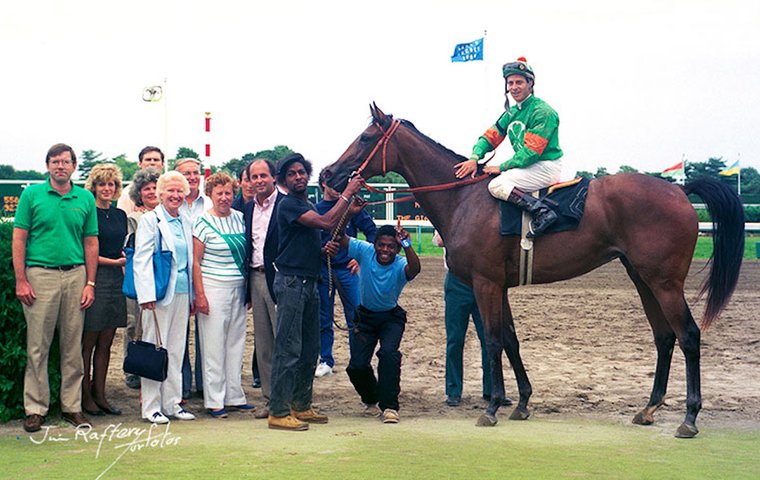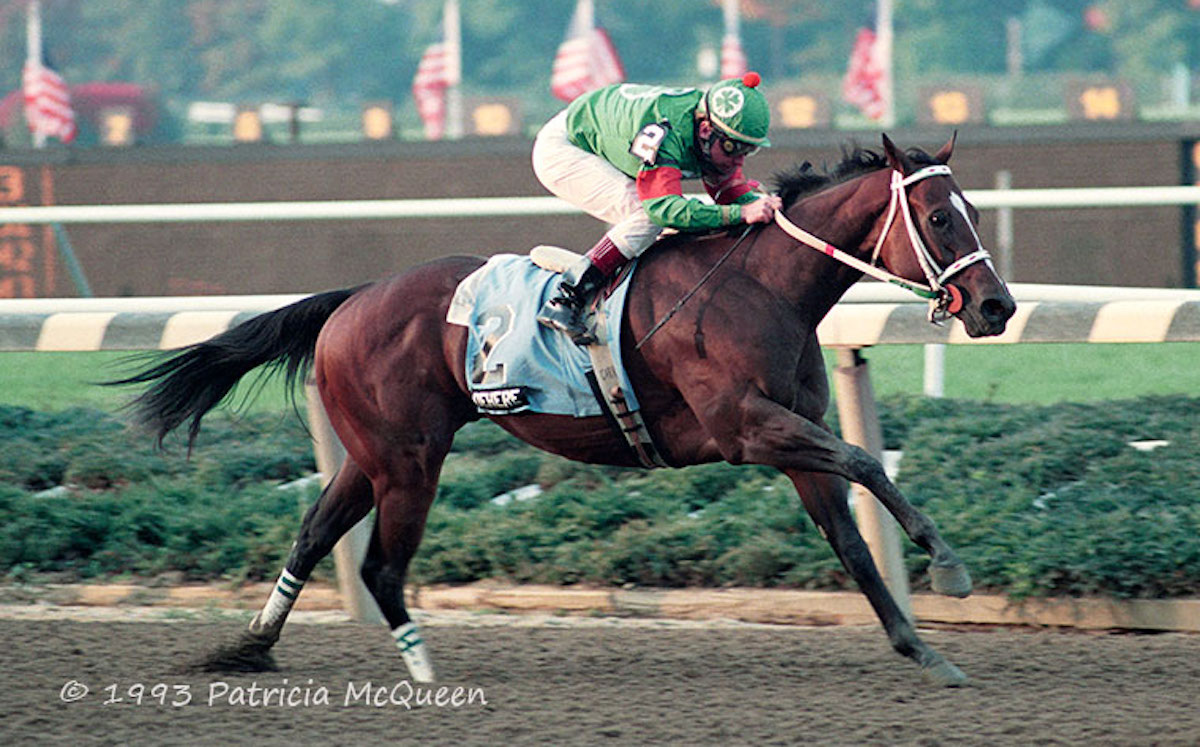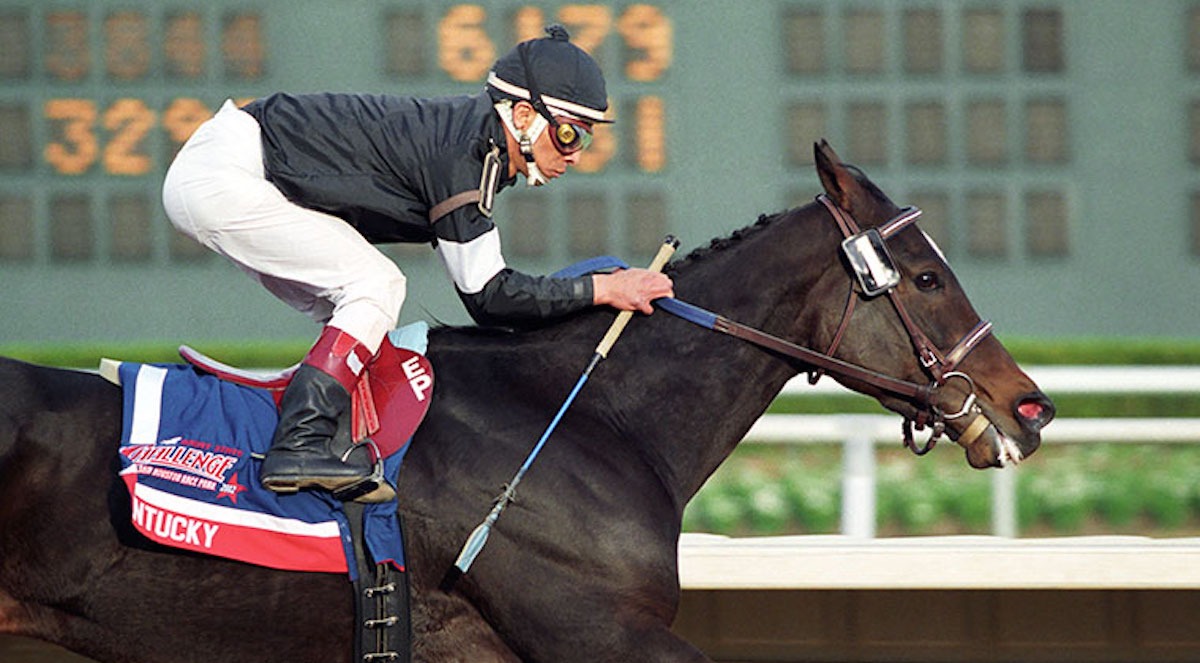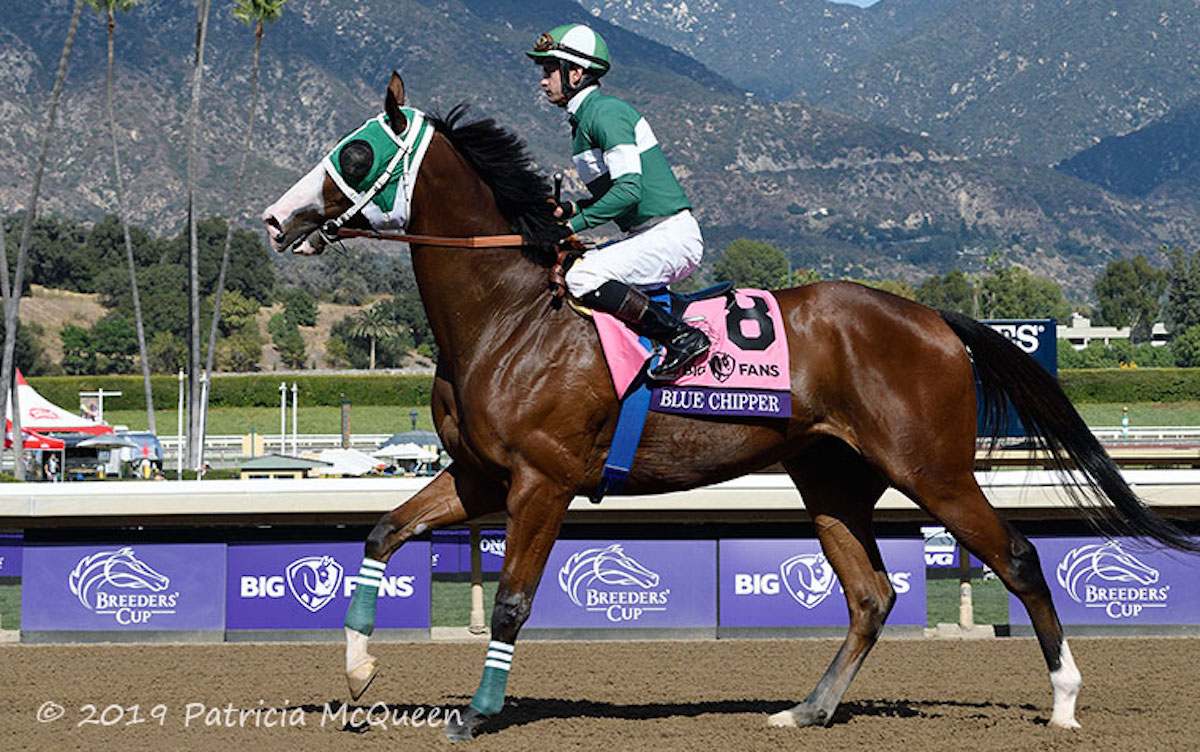
In her latest article tracing the descendants of the legendary Secretariat, Patricia McQueen recalls the modest racemare who produced a champion two-year-old in Dehere
USA: The North American Thoroughbred breeding industry was forever changed by Secretariat’s elite grandsons A.P. Indy and Storm Cat, but they weren’t the only top stallions produced by Secretariat mares. Gone West has also been an important influence, and Chief’s Crown to a lesser degree. Then there’s Dehere.
The champion two-year-old colt of 1993, Dehere later made his mark as a broodmare sire. His best runner was the filly Take Charge Lady, who emerged as a world-class broodmare, awarded Kentucky Broodmare of the Year honors in 2013.
None of Secretariat’s other grandsons sired a mare who earned that title (as Secretariat himself did with Weekend Surprise). Dehere’s daughters also produced champion sprinter Midnight Lute and $5.7 million-earner City Of Light.
 So who was the Secretariat mare responsible for Dehere? Her name was Sister Dot, a hard-knocking New Jersey-bred who managed five stakes placings among her 35 starts from age two through five. She may not have had the bluest of blood compared to the likes of Weekend Surprise, Terlingua, Secrettame, Six Crowns and others, but she did have credentials.
So who was the Secretariat mare responsible for Dehere? Her name was Sister Dot, a hard-knocking New Jersey-bred who managed five stakes placings among her 35 starts from age two through five. She may not have had the bluest of blood compared to the likes of Weekend Surprise, Terlingua, Secrettame, Six Crowns and others, but she did have credentials.
Sister Dot was the only stakes horse among five named foals out of the Damascus mare Sword Game, a full-sister to Diabolo, one of the top colts born in 1972. Diabolo set a track record winning the G2 California Derby in 1975; his other G2 wins were the San Jacinto Stakes and the Del Mar Futurity. He was third in both the Kentucky Derby and Preakness and in other G1 races for three-year-olds of 1975, the Santa Anita Derby and the Swaps Stakes.
Sword Game and Diabolo were out of the Baybrook mare Bill And I, a multiple stakes winner in the late 1960s, primarily in the Midwest. Bill And I in turn was out of Klinchit, a granddaughter of the great Bull Dog. Among Klinchit’s other descendants are several graded stakes winners and multiple champions in Peru.
Placed in nine starts, all at New York tracks, Sword Game was sold at the 1981 Keeneland January sale in foal to Mr. Prospector; the buyer at $220,000 was Robert Brennan’s Due Process Stable. The mare produced all five of her foals for the outfit, and her 1985 daughter by Secretariat was by far the star of the group.
First-out victory
Born on February 11, 1985, the bay filly was named after a nun who had been one of Brennan’s early teachers. The human Sister Dot would sometimes attend the filly’s races.
Trained by Phil Gleaves early in her career, Sister Dot made her racing debut in a five-furlong maiden race for New Jersey-breds at Monmouth Park on July 7, 1987. She closed well on the outside to get up just in time to win by a nose in :59 1/5. Off that effort, she was sent into the Colleen Stakes three weeks later, but could finish only fifth.
A journey to Saratoga produced a fourth-place finish in an allowance race, but she followed that with the first of several stakes placings in her career. It was the Yarrow Stakes on October 12 at Philadelphia Park (now Parx), restricted to non-winners of $20,000 twice. Although she went off as favorite, she was no match for runaway winner Sovereign Sign and settled for second.
Two races later, Sister Dot was sent against the best in the G1 Demoiselle Stakes on November 7, but checked in ninth and last as the top-quality Goodbye Halo won in a romp.
Sister Dot received some time off after two more starts that year. She returned in good form the following summer at Monmouth, making her three-year-old debut on June 6, 1988, with a nice second in an allowance race. She returned to the winner’s circle in her next start on June 21, enjoying a switch back to the turf course – she had placed twice on the surface as a two-year-old.
Nose in front at the wire
Going a mile and a sixteenth over a firm Monmouth course, she was close early, but then jockey Julie Krone had to check her hard to avoid clipping heels as the field began the stretch run. Despite that setback, she closed with a rush to get her nose in front at the wire. It was her only victory that year, but she followed it up with a third in the Life’s Magic Stakes on July 5, also on Monmouth’s grass course.
After a fourth in the Atlantic City Oaks, Sister Dot returned to allowance company for the remainder of the year, with just two thirds to show for six more efforts.
Due Process kept her even busier as a four-year-old in 1989, when Reynaldo Nobles took over training duties. Sister Dot went to the gate 12 times from March to December, but she did get a two-month spring break. All she had to show for her first six starts were two thirds in allowance races, but she was a much better horse in the fall.
After a second in a Monmouth allowance race on August 30, she picked up her third career win – and her first away from Monmouth – at the Meadowlands on October 5. On a yielding turf course, she tracked the early leaders and made her move along the inside around the far turn.
Through the stretch, she continued her run and hit the wire a length and a half in front; it was the only time she ever won a race by more than a nose. In four more 1989 starts, she was third in the Allium Stakes and second in two allowance races, all at Philadelphia Park.
Sister Dot continued racing that winter, running well five times in early 1990 before heading to the breeding shed. She got her fourth and final victory, back on the dirt, at Philadelphia Park on January 2. At seven furlongs over a fast track, she saved ground early and then made a determined charge to just get up by a nose.
She closed out her career with three races at Garden State Park. After an allowance fourth, she picked up two more stakes placings, finishing third in the Haddonfield and Tosmah Handicaps.
In total, Sister Dot made 35 starts, with four wins, seven seconds and nine thirds, for earnings of $101,406. Two of her victories were on the dirt, two on turf, and she placed in five stakes races, including one on the grass.
Broodmare success
Sister Dot had won her very first start, and was similarly fast out of the gate as a broodmare. Brennan sent her to Deputy Minister in both 1990 and 1991, and she rewarded him by producing champion Dehere in 1991 and stakes-placed Defrere in 1992. Deputy Minister had earned the Eclipse Award as champion two-year-old male in 1981, and was also Canadian Horse of the Year the same year. Due Process had acquired the colt later in his racing career.
Dehere put Sister Dot in the books as one of Secretariat’s top producing mares, not only because he was a champion racehorse but also because of his impact as a stallion. He won his first four starts at two in 1993, including a rare sweep of Saratoga’s three stakes for two-year-olds, the Saratoga Special, Sanford and G1 Hopeful.
His performances wowed both the crowds and the racing writers, as he displayed an incredible turn of foot. He added the Champagne Stakes to his resume, and despite losses in the Futurity (to Holy Bull) and Breeders’ Cup Juvenile, Dehere still earned the championship in his division.
The colt made only two starts at three, finishing second in an allowance race before taking the G2 Fountain of Youth, avenging his earlier defeat by Holy Bull, who was in the vanquished field. Unfortunately Dehere fractured his right-hind cannon bone in a workout shortly thereafter, and while there was hope for a return to the races, he was retired instead.
He was a globetrotter as a stallion, with two stints at Ashford Stud in Kentucky and a few years in Japan in between, shuttling to Australia all the while. Dehere was sold to Turkish interests for the 2010 season and stood in that country until his death in 2014.
Sire of 80 black-type winners
The stallion sired 80 black-type winners from more than 1,700 foals. His best American son was Graeme Hall, and he also sired several Australian G1 winners.
His daughter Take Charge Lady was a multiple G1 winner with earnings of $2.5m, and her offspring include 2013 champion three-year-old colt Will Take Charge and additional G1 winners Take Charge Indy and As Time Goes By (in 2022). Her 2005 daughter Charming has excelled as well, producing 2014 two-year-old champion filly Take Charge Brandi and multiple G1 winner Omaha Beach.
 Dehere’s full-brother Defrere didn’t reach the national stage like his brother, but he was the star of New Jersey for seven straight years. The stakes-placed winner of three of his five starts started his stud career in Kentucky, but after moving to New Jersey he was the state’s leading sire from 2008 to 2014. He sired a total of 22 black-type winners, led by Japanese multiple graded-stakes winner Le Mars Girl, who earned almost $3.9m.
Dehere’s full-brother Defrere didn’t reach the national stage like his brother, but he was the star of New Jersey for seven straight years. The stakes-placed winner of three of his five starts started his stud career in Kentucky, but after moving to New Jersey he was the state’s leading sire from 2008 to 2014. He sired a total of 22 black-type winners, led by Japanese multiple graded-stakes winner Le Mars Girl, who earned almost $3.9m.
Sister Dot was sold after producing her third foal (and first filly), Demi Souer (by Storm Bird), in 1993. Unraced, Demi Souer founded her own line of stakes winners, with descendants including American graded stakes winners Fast Decision, Dixie City and Unified, Turkish G1 winner Hasafet, and the most interesting of them all, Blue Chipper.
He is a Kentucky-bred by Tiznow who was sent to the Republic of Korea for racing. There, he was champion sprinter and miler in 2019, and brought a record of seven wins in eight starts to Santa Anita as the first Korean-trained runner in the Breeders’ Cup. He was a solid third in the Breeders’ Cup Dirt Mile.

Secretariat’s daughter produced 11 more foals, the last few in Ireland, but they didn’t make the same impression as her first three. She did have two more stakes-placed winners, G2-placed Hans Anderson (in Saudi Arabia), also by Deputy Minister, and G3-placed Danesis, a son of Danehill who raced in Hong Kong.
In total, Sister Dot produced 14 foals, with 11 starters and seven winners. She earned her place among Secretariat’s best mares, and continues to show up in the pedigrees of top runners today, including 2022 Saudi Derby hero Pinehurst, whose second dam Win’s Fair Lady is yet another stakes-producing daughter of Dehere.
Special feature: America’s favorite racetrack – but just what is it that makes Saratoga so great?
View the latest TRC Global Rankings for horses / jockeys / trainers / sires


